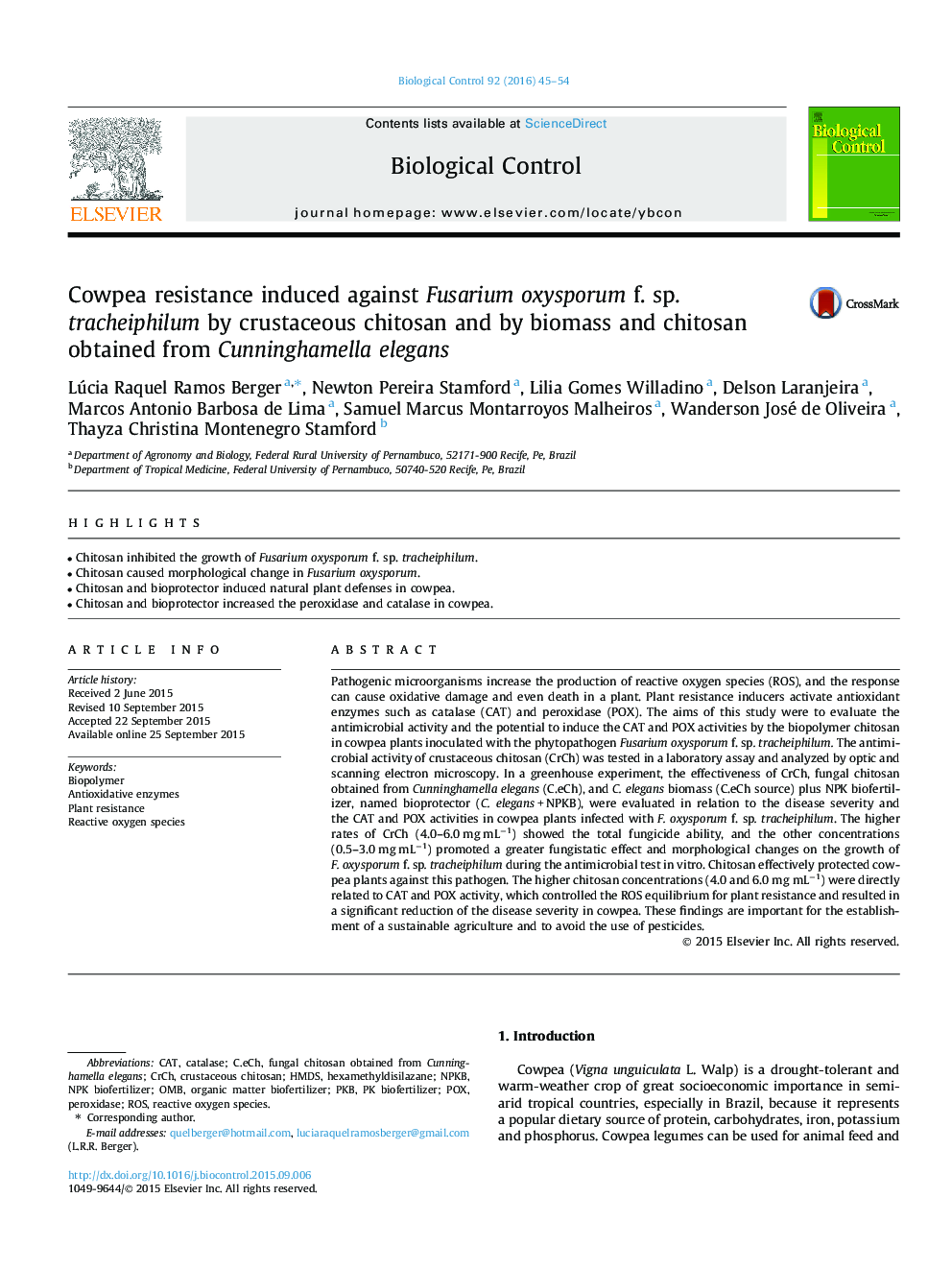| Article ID | Journal | Published Year | Pages | File Type |
|---|---|---|---|---|
| 4503705 | Biological Control | 2016 | 10 Pages |
•Chitosan inhibited the growth of Fusarium oxysporum f. sp. tracheiphilum.•Chitosan caused morphological change in Fusarium oxysporum.•Chitosan and bioprotector induced natural plant defenses in cowpea.•Chitosan and bioprotector increased the peroxidase and catalase in cowpea.
Pathogenic microorganisms increase the production of reactive oxygen species (ROS), and the response can cause oxidative damage and even death in a plant. Plant resistance inducers activate antioxidant enzymes such as catalase (CAT) and peroxidase (POX). The aims of this study were to evaluate the antimicrobial activity and the potential to induce the CAT and POX activities by the biopolymer chitosan in cowpea plants inoculated with the phytopathogen Fusarium oxysporum f. sp. tracheiphilum. The antimicrobial activity of crustaceous chitosan (CrCh) was tested in a laboratory assay and analyzed by optic and scanning electron microscopy. In a greenhouse experiment, the effectiveness of CrCh, fungal chitosan obtained from Cunninghamella elegans (C.eCh), and C. elegans biomass (C.eCh source) plus NPK biofertilizer, named bioprotector (C. elegans + NPKB), were evaluated in relation to the disease severity and the CAT and POX activities in cowpea plants infected with F. oxysporum f. sp. tracheiphilum. The higher rates of CrCh (4.0–6.0 mg mL−1) showed the total fungicide ability, and the other concentrations (0.5–3.0 mg mL−1) promoted a greater fungistatic effect and morphological changes on the growth of F. oxysporum f. sp. tracheiphilum during the antimicrobial test in vitro. Chitosan effectively protected cowpea plants against this pathogen. The higher chitosan concentrations (4.0 and 6.0 mg mL−1) were directly related to CAT and POX activity, which controlled the ROS equilibrium for plant resistance and resulted in a significant reduction of the disease severity in cowpea. These findings are important for the establishment of a sustainable agriculture and to avoid the use of pesticides.
